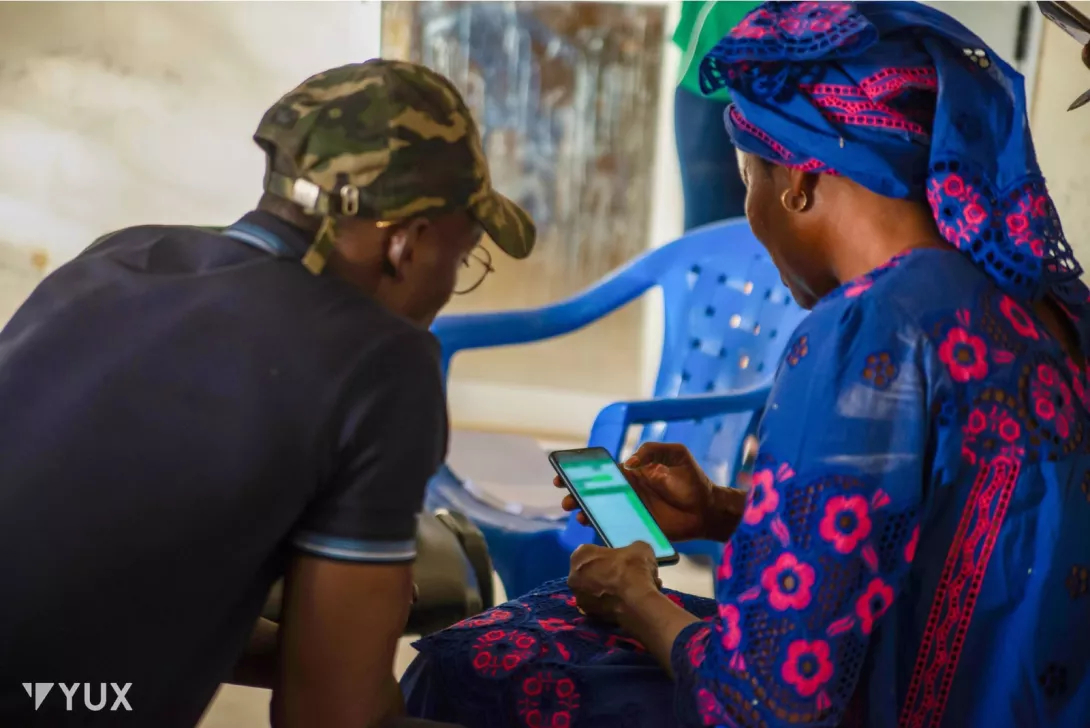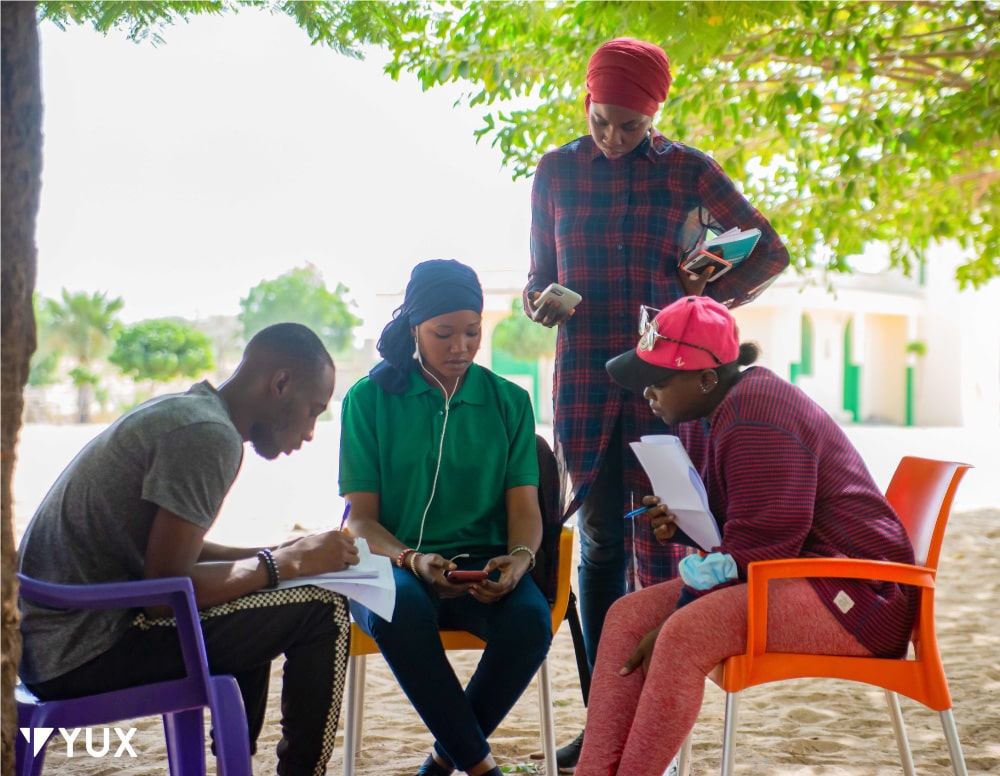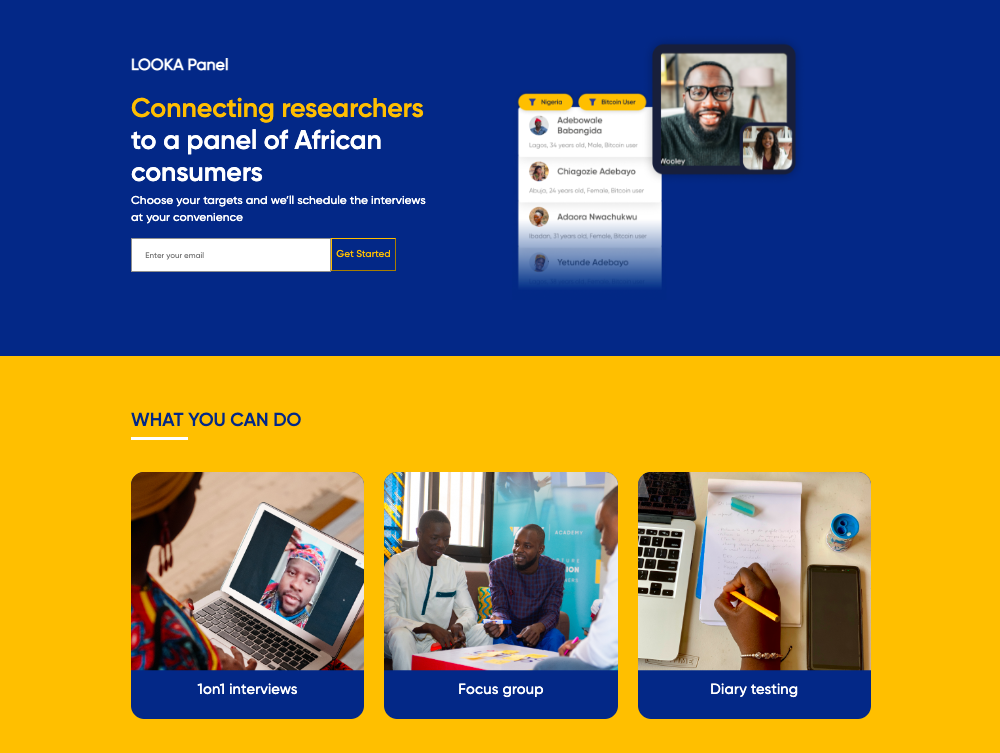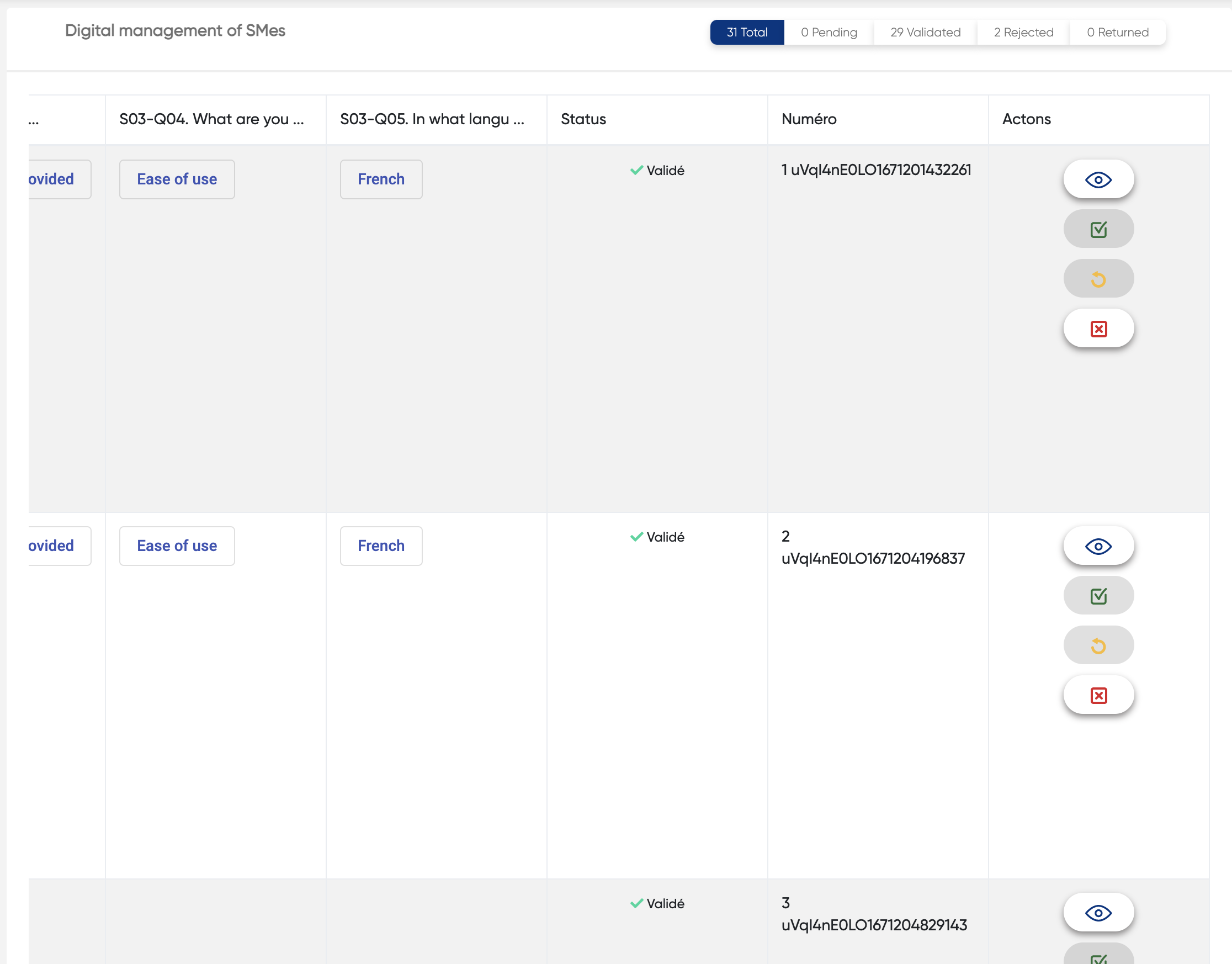
How it started

LOOKA Panel is the online recruitment service launched by LOOKA Research, a quantitative research Service that is part of an African design and research agency called YUX, whose mission is to create digital products and services adapted to the African context.
4 years ago I started my journey as a UX researcher at YUX and took part in many research studies within the research team up to this day. And during this time we’ve had our fair share of recruitment constraints and unpredictability.
According to our 2022 State of User Research in Africa, finding the right participants is the number one barrier for researchers when it comes to conducting user research, with 25% of the participants surveyed reporting recruitment as one of their main challenges.
Even throughout my time at YUX, we would experience many times this well known struggle of finding participants in a fair amount of time. Sometimes we would plan one week for recruitment and end up adding more weeks because we didn’t have the total number of participants needed.
Some frequent challenges faced during recruitment involves :
Participant criteria are too “niche”, e.g. professionals that don’t have enough time during their day or aren’t accessible enough for a moderated research session.
You might be on a tight schedule and therefore won’t afford the luxury of a lengthy recruitment process
Participants might show up late or even not show up at all due to many reasons. The most common reasons are scheduling conflicts (other commitments or responsibilities), emergencies, illness, transportation, forgetting or loss of interest, etc.
When the research study involves sensitive topics, it can be harder to find participants who are comfortable enough to share their feedback
Incentive distribution can be challenging
With those challenges in mind, we knew that the ideal solution was to create a user research panel that would help us recruit faster for future research studies.
If you are not familiar with research or you just started learning about it, you might ask :
- So what exactly is a user panel ?
A user research panel or user panel is a group of users you can contact to run research studies such as interviews, user testing, diary testing, surveys, etc.
Rather than looking for new participants every time you have to test hypothesis, validate a concept or learn about the market trends, you can choose participants from a list of users.
Most of the time, user panels only invite users who test products or provide feedback related to one brand or company. But in our case we knew that our panel should serve two types of users :
The study participant : they sign up to take part in the study in exchange of a compensation for their time
The researcher : they select a certain number of participants that meet their criteria from the LOOKA Panel participant database, and therefore don’t have to do the recruitment themselves
So we needed to take into account the needs of each of those distinct users, which channels to use to target those users and how to make the experience memorable for each user.
Why should you use a User Panel ?

Reduce time and cost for recruitment
Having your own pool of participants who already showed their interest will significantly reduce recruitment time. When on a budget or working in fast-paced environments, a user research panel will help alleviate some constraints and save you time and money.
Helps you recruit users with specific backgrounds, who belong to a particular sector or use some specific technologies
Some people will be harder to reach than others, for instance you might need users with a specific background, sector or who use a specific service. In those cases where participants are hard to come by, a user panel can help recruit those people ahead of time and invite them for research studies while being reassured that they are willing to take part in your study.
Launch of the LOOKA Panel
In 2020 I transitioned from a UX researcher to a Product Manager. We decided to finally create the user panel and I was put in charge of the project.
Not only the Panel should be able to provide users for YUX research projects, but we needed a larger database that clients could use themselves to choose participants for their studies.
So that’s how the LOOKA user research Panel was born. LOOKA specializes in quantitative studies and market research. Collecting and keeping large user databases up to date was not something new to them. So instead of a YUX panel, we decided on a LOOKA panel to take advantage of the processes already put in place by LOOKA.
During my first months as a new Product Manager, the team and I took the time to think about what we needed to implement. So we brainstormed ideas for our MVP, created our user personas and produced some wireframes for what the service main interface should look like.
What we needed to set up and tips on how to set it up
A sign up form for recruiting participants based on the research criteria
The first thing that potential participants would see before signing up was general information about the panel and why we were inviting them to become panelists. It is very important to not focus on trying to “oversell” the benefits of becoming a participant, but let users know the purpose of your study or the objective of your research. They need to know why you are recruiting participants, what research activities to expect, how, when, where they will be conducted, and how you will use the information that they will share.
The second element of the sign up page is the form itself which should allow users to enter general background information, their contact details and any other info deemed necessary.
2. Choose the right communication channels to reach out to participants
Once your sign-up form is written, you need to think about how to get it in front of potential participants. You could decide to rely solely on a specific page on your website dedicated to your research panel, but unless your website already has a huge daily traffic, it will be hard for your panel to grow fast organically, though not impossible.
If you want to maximize the amount of early adopters for your panel, promoting your user panel will give you a higher chance of having an initial burst of participants. Social media is a great way to start, especially if your target audience is people between 18 - 35 years old who regularly use digital tools.
Further down the road, you can choose to have a permanent or main place where you recruit new users, which could be a specific page on your website or at different stages within the website. For instance as a popup, or as an option for each new visitor who wants to sign up to your newsletter.
We use social media to recruit young people whose level of digital literacy fall between medium and high. With Facebook and Twitter alone, we managed to invite 748 new sign-ins for a STITCH qualitative research study project in one week. You just have to know where your users are more likely to be found.
3. Collect participants information in a secure database
There are lots of ways to collect participants information. Perhaps the easiest method is to use a spreadsheet, but no matter the tool you use, you must ensure that user data will be secure.
Other things to consider will be how easy it will be to filter and pull out lists of participants and how often you update your database.
At LOOKA Panel, there is a limit of time after which we delete all sensitive user info to ensure user data privacy.
4. Be able to pull out lists of participants according to the study criteria
You might need your user participants panel to conduct research on one particular product or service, in that case you only need to target users who fall within your user personae. But in our case we needed to use the panel for a diversity of projects.
Each new research study will involve users with a certain number of criteria. That means we need to collect info that will help us filter users who fall under those criteria.
For instance, for a Google project about mobile money, we had to invite users who already used some specific mobile money services and others who never used them, and among those who never used those services, we needed to know if there were people who previously had bank accounts in various banks. We needed to be able to apply multiple filters to our database to pull out the right participants.
5. Accessible video conferencing tools
After collecting user info using the sign up form, we schedule screening video calls with a group of selected eligible users. These calls allow us to verify information provided by users, to ask additional screening questions if needed, or to provide more details about the study…
This additional screening step is not mandatory but is recommended if you are conducting the research sessions with new users.
Using a video conferencing tool that is accessible for users was very important to us, that is why screening calls were also an opportunity for us to test participants’ connectivity before the study session.
You should ensure that the tool you use will allow some handy features such as screen sharing and recording the session.
6. Easy scheduling process
The time it takes to schedule research sessions can easily be overlooked. Some participants might opt out at the last minute and others might not show up. That’s why we will screen slightly more people than needed if we have to go fast. In those cases we remind participants that there will be an extra step in the screening process to avoid frustration.
Our goal is to work on lowering the percentage of scheduled participants who do not complete the test and keep it below 5%.
We use an excel sheet to organize the different sessions scheduled. The Research Op team use it to collaborate with research moderators and other project members.
7. Incentive distribution
Ideally the incentive shouldn’t be the main motivating factor for users to participate in your study but it is very crucial to deliver on your promise at the end of each session.
Of course the nature of the incentive depends on you : it could be financial, small goodies or just reminding passionate users about how their feedback can help make an impact in the use of a certain type of solution.
At LOOKA Panel we often incentivize users with a certain amount of money. But it is important to note here that we are not compensating the user for his feedback, but the incentive serves merely as a token a gratitude.
What did we learn along the way ?

A representative sample can be challenging when using only a panel
People who want to sign up for your user research panel might be different from the people who opt out. We have noticed that panel participants tend to show more positive feedback than other users in general. It might be because of the financial motivating factor (If the studies are paid). Or maybe participants are passionate enough about your subject that they consider themselves advocates, with strong opinions regarding some topics. Or maybe participants are simply experts in your subject with years of experience in one particular field.
This problem is often called the non-response bias, which occurs when users who opt out of a research study are different from those who complete it, in ways that could affect the study results.
You should ask yourself here if you particularly need participants who are advocates or experts, and what ratio of these users you need in your sample.
At LOOKA Panel we sometimes use other approaches to recruitment such as having a mix of Panel and on-site recruitment by LOOKA surveyors. This allow us to have a more diverse and representative pool of participants.
For example we helped Wikimedia recruit 32 participants for qualitative research using LOOKA Panel and 3000 more participants for a quantitative study using LOOKA Survey.
Data verification is an important step
Before launching the panel we had a lot of discussion about the amount of info we needed to collect in the sign-up form. My view was that we needed to keep the initial questionnaire light to not overload participants and minimize dropout rate, and other team members would suggest adding all criteria specific questions for more accurate screening.
But in the end we realized that the sign-up form alone is not reliable enough to collect accurate user data. We had few cases of users who would provide false answers (maybe in hope of being selected for the study), but more importantly the user situation could change over time.
That’s why the screening process is a critical step in ensuring that the study results are valid.
At Panel we often screen users during 1 on 1 calls to verify the information users provide, have some clarifications and further explain the research goal to participants.
Automate in order to scale
The goal when we started the research panel project was to start with a few internal pilot studies. But as demand for recruitment from clients grew, we launched the panel sooner than we planned.
Some of the first recruitment project involved big clients such as Google and Stitch. With a process that was not yet fully automated, the Research Ops team would have to add an extra week to complete recruitment.
We later adopted tools that created more automation into our workflow and sped up the overall process.
There is a large number of tools that are used for panel management. While a simple pen and notebook might be enough to write a dozen contacts every once in a while, when you start working in big teams or big projects, you will need to consider specialized tools that will help you gain time. From large CRM (Costumer Relationship Management) software to market research panels, the options are diverse.
Scaling will also mean that you will need to recruit people who will run the user panel. At LOOKA Panel, we have a dedicated research Ops team whose role is to keep the panel running and help assist researchers use the service.
If you are looking for a user research Panel that will provide you with participants who are from African countries, feel free to reach out to LOOKA Panel. We have conducted recruitment for Google, Meta, Stitch, Block among many other companies.
